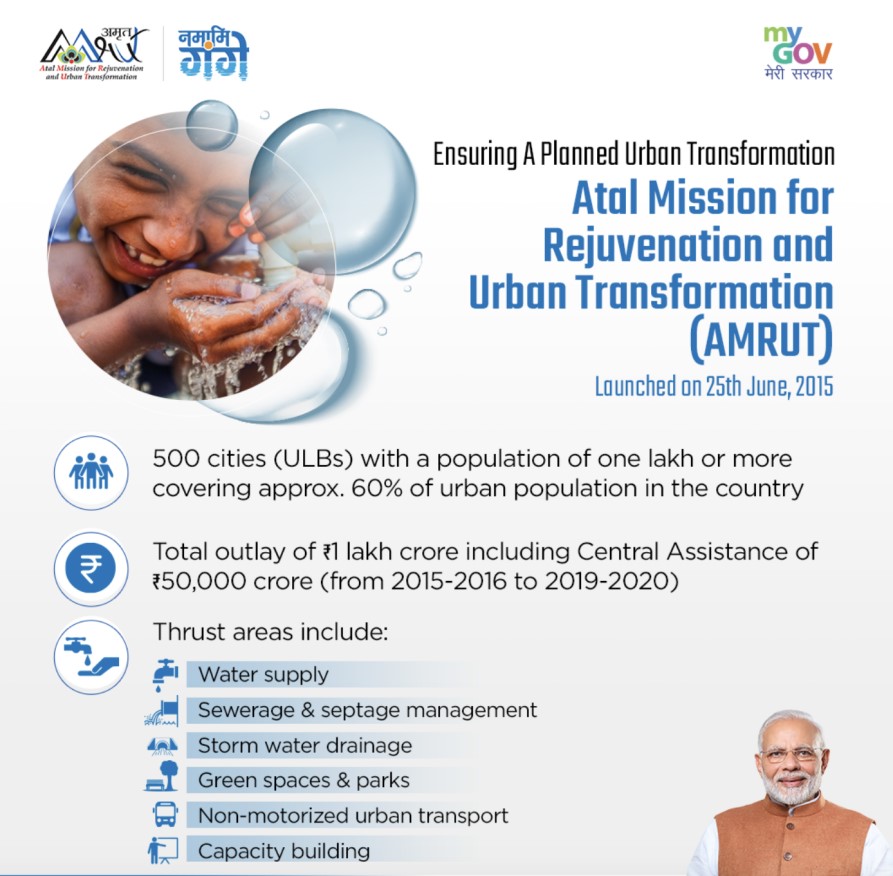7667766266
enquiry@shankarias.in
Why in news?
AMRUT scheme recently made news due to challenges in improving infrastructure related to water supply, mobility, and pollution.
What is AMRUT scheme?

Around 36% of India’s population is living in cities and by 2047 it will be more than 50%.
|
AMRUT 2.0 |
|
What are the major challenges faced by the government to implement AMRUT scheme?
The average water supply per person is only 69.25 litres/day, far below the required 135 litres.
What lies ahead?
Reference